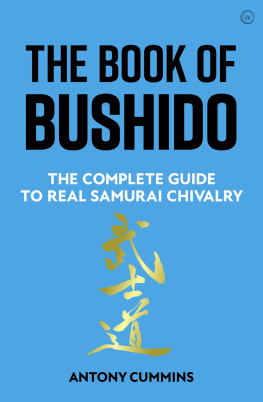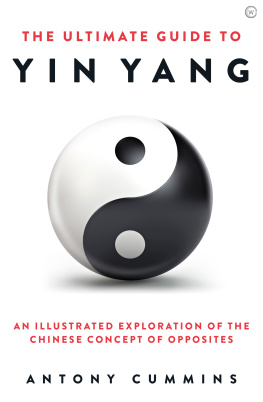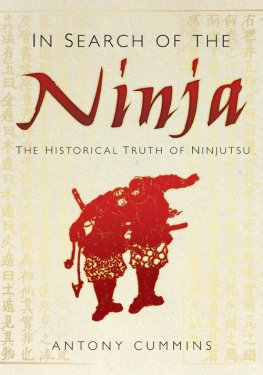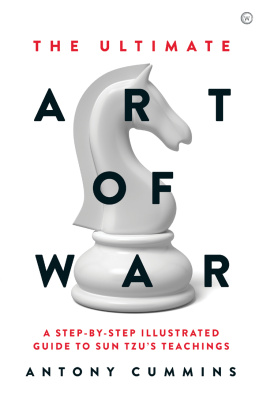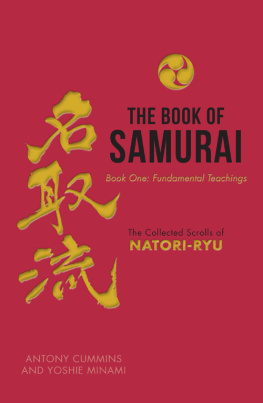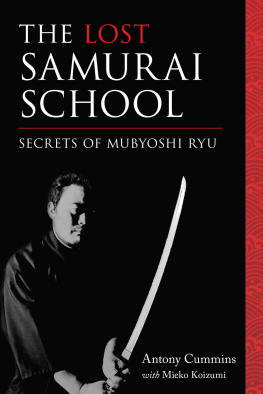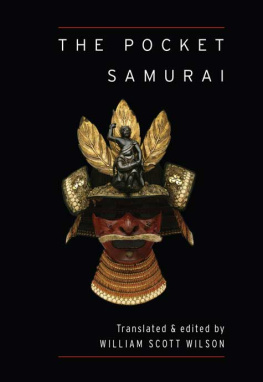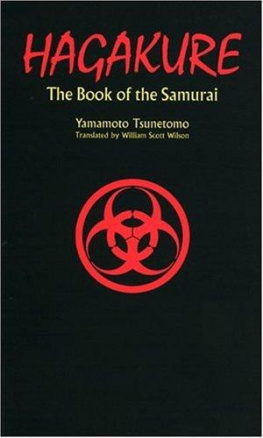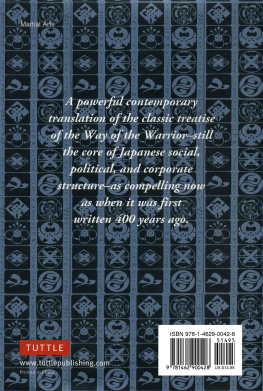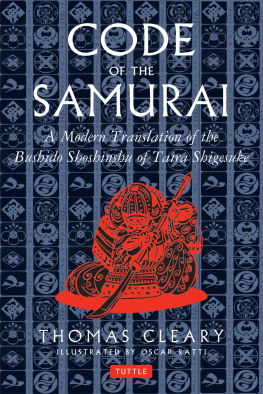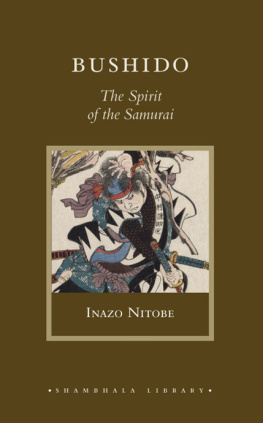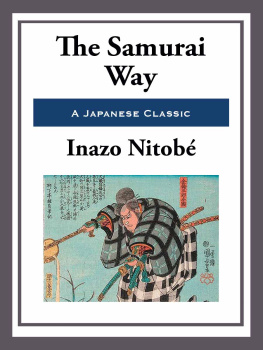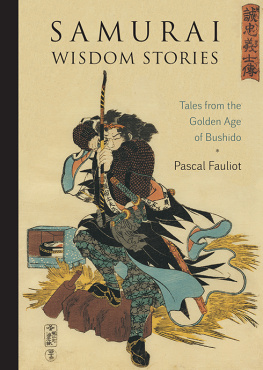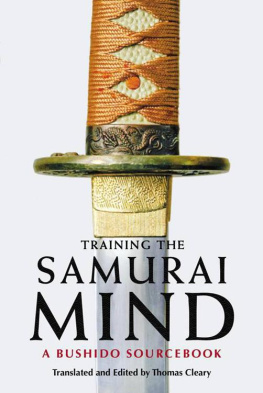
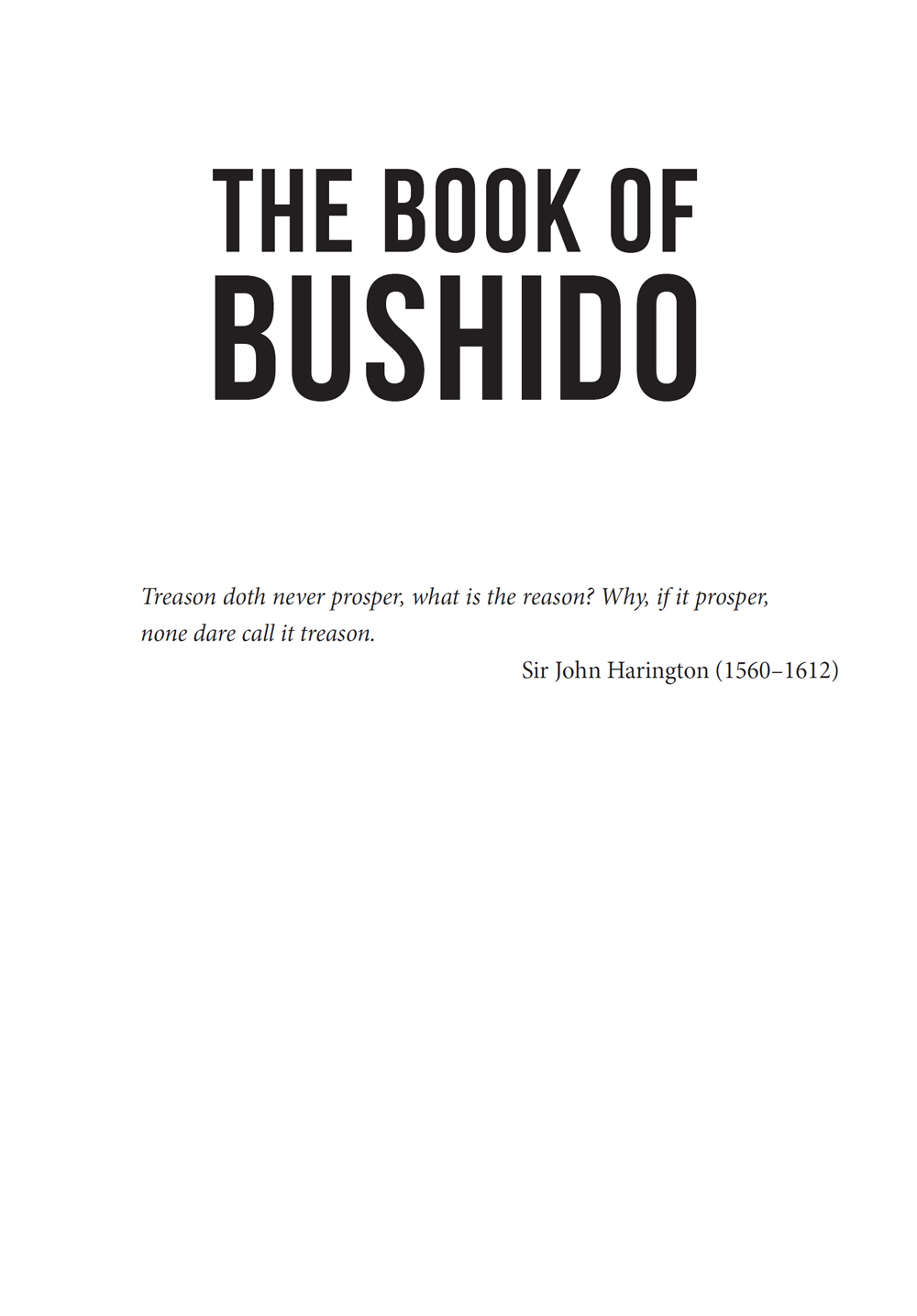

BY THE SAME AUTHOR
The Book of series
Book of Ninja: The First Complete Translation of the Bansenshukai
Book of Samurai: Fundamental Teachings (Book 1)
Book of Samurai: Samurai Arms, Armour & the Tactics of Warfare (Book 2)
The Ultimate Guide series
The Ultimate Art of War: A Step-by-Step Illustrated Guide to Sun Tzus
Teachings The Ultimate Guide to Yin Yang: An Illustrated Exploration of the Chinese Concept of Opposites
Books on samurai, ninja and Japan
How to Be a Modern Samurai: 10 Steps to Finding Your Power and Achieving Success
Iga and Koka Ninja Skills: The Secret Shinobi Scrolls of Chikamatsu Shigenori
In Search of the Ninja: The Historical Truth of Ninjutsu
Modern Ninja Warfare: Tactics and Methods for the Modern Warrior
Ninja Skills: The Authentic Ninja Training Manual
Old Japan: Secrets from the Shores of the Samurai
Samurai and Ninja: The Real Story Behind the Japanese Warrior Myth that Shatters the Bushido Mystique
Samurai Death Cult: The Dark Side of Bushido
Samurai War Stories
Secrets of the Ninja: The Shinobi Teachings of Hattori Hanzo
The Dark Side of Japan: Ancient Black Magic, Folklore, Ritual
The Lost Samurai School: Secrets of Mubyshi Ry
The Secret Traditions of the Shinobi: Hattori Hanzos Shinobi Hiden and Other Ninja Scrolls
True Path of the Ninja: The Definitive Translation of the Shoninki
Other books
The Illustrated Guide to Viking Martial Arts
The Lost Warfare of India: An Illustrated Guide
This edition first published in the UK and USA 2022 by
Watkins, an imprint of Watkins Media Limited
Unit 11, Shepperton House
8993 Shepperton Road
London
N1 3DF
Design and typography copyright Watkins Media Limited 2022
Text copyright Antony Cummins 2022
Antony Cummins has asserted his right under the Copyright, Designs and Patents Act 1988 to be identified as the author of this work.
All rights reserved.
No part of this book may be reproduced or utilized in any form or by any means, electronic or mechanical, without prior permission in writing from the Publishers.
10 9 8 7 6 5 4 3 2 1
Designed and typeset by JCS Publishing Services Ltd
Calligraphy by Yamamoto Jyuh
Printed in the United Kingdom by TJ Books Ltd
A CIP record for this book is available from the British Library
ISBN: 978-1-78678-605-0
www.watkinspublishing.com
CONTENTS
This book is dedicated to the Comminnauts, an intellectual group based in Commins Coch, near Machynlleth, Powys. Many of the ideas in this book sprang from this debate group formed by Robin Clifton, Vivien Clifton, Daniel Bryan and me, with many shared evenings of cake, tea and discussions of samurai ethics and morality.
ACKNOWLEDGEMENTS
Above all, I would like to give thanks to Fiona Robertson for her constant support of my work, a favourable wind sending me across the sea of my future dreams. Also, to my editor, James Hodgson, for his excellent treatment of the text. To Koizumi Mieko for her diligent checking of the manuscript and quotes. To Yamamoto Jyuho for calligraphy. To Matthew Okuhara for sharing with me his work on the samurai and their use of guns. Also, to the many others who have over the years translated old Japanese texts into English for the world to enjoy, including but not restricted to: Thomas Cleary, William Scott Wilson, Alexander Bennett, Hiroaki Sato, Tabata Kazumi, Royall Tyler and Eric Shahan, all of whom deserve credit for their contributions to Japanese history. A special thank you goes to Nicholas DeLaune of the YouTube channel The Shgunate, who has been my historical fact checker on this mission, and who has helped to promote my work and support my approach to his fullest ability. Finally, to Robin Clifton, formerly of the University of Warwick, for his general help and his suggestion of the opening quote by Sir John Harington.

INTRODUCTION:
AN OUTLINE OF SAMURAI HONOUR
The samurai ideal:
What the cherry blossom is among flowers, bushi warriors are among men.
Japanese saying
The samurai reality:
Of course, honesty is a principle on the original form of the path which I learn. However, using deception in certain situations cannot be avoided.
Yoshisada Gunki (transcribed 1629)
WHO WERE THE SAMURAI?
The samurai originated in the second half of the first millennium. They served the imperial court, first as court servants and bureaucrats, then as a warrior caste who guarded the court of Kyto and put down rebellions throughout the land. Later they seized power for themselves yet never removing the Emperor as head of state and placed Japan under military rule.
It would be wrong to view the samurai as a homogenous group; they comprised various types occupying different social levels, ranging from blue-blooded sons of princes all the way down to peasants made good and opportunists. General terms for them include:
samurai () literally, one who serves
bushi () military knight or gentleman
mononofu () alternative name for bushi, often used in poetry
musha () military person
There were also more specific terms for certain kinds of samurai, including:
rnin ( or ) person who floats upon the wave of society or prison person, these were wandering samurai who did not have a lord
watari-zamurai () mercenary, similar to rnin
jizamurai () country samurai, akin to landed gentry
dog () powerful land-owner
suhadamono () warrior on the field of battle who had bare legs and light armour
koshi () ex-knight from a family that had lost full samurai status but retained certain privileges
nobushi () bandit knight who lived in the wilds
All of these were considered as military personnel at one point or another, yet many did not fit the archetype of the noble warrior who aspired to follow bushid.
The samurai was both servant to some and master to others, taking his place in a hierarchical pyramid with the apex warrior at the top. His objective in life was either to climb to the top of that pyramid or to give military service to someone else who climbed it and receive in return land rights and position. A system relying so heavily on the moral obligations of giving and receiving needed to be governed by some form of code of conduct, and that is how bushid came into being.
WHAT IS BUSHID?
Bushid () is the chivalric, moral and ethical system of ideas and correct behaviour developed by the samurai class. The term is made up of two parts: bushi (), military gentleman, and d (), which refers to the Daoist Way, meaning the pattern behind the universe, or the Confucianist way, meaning to follow a proper path. The full term bushid is most commonly translated as the way of the warrior or the way of the samurai.
Next page
